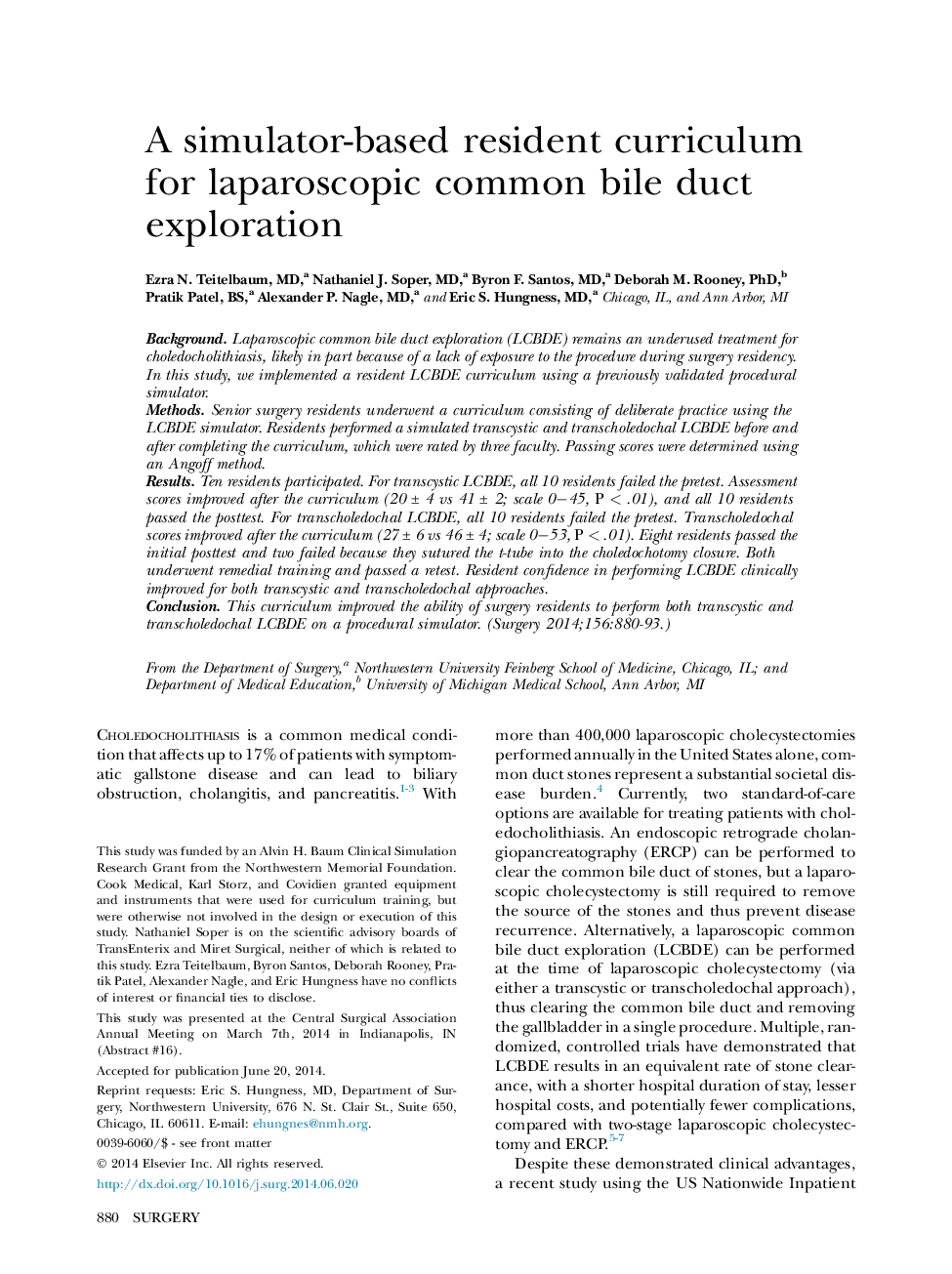| Article ID | Journal | Published Year | Pages | File Type |
|---|---|---|---|---|
| 4307635 | Surgery | 2014 | 14 Pages |
BackgroundLaparoscopic common bile duct exploration (LCBDE) remains an underused treatment for choledocholithiasis, likely in part because of a lack of exposure to the procedure during surgery residency. In this study, we implemented a resident LCBDE curriculum using a previously validated procedural simulator.MethodsSenior surgery residents underwent a curriculum consisting of deliberate practice using the LCBDE simulator. Residents performed a simulated transcystic and transcholedochal LCBDE before and after completing the curriculum, which were rated by three faculty. Passing scores were determined using an Angoff method.ResultsTen residents participated. For transcystic LCBDE, all 10 residents failed the pretest. Assessment scores improved after the curriculum (20 ± 4 vs 41 ± 2; scale 0−45, P < .01), and all 10 residents passed the posttest. For transcholedochal LCBDE, all 10 residents failed the pretest. Transcholedochal scores improved after the curriculum (27 ± 6 vs 46 ± 4; scale 0−53, P < .01). Eight residents passed the initial posttest and two failed because they sutured the t-tube into the choledochotomy closure. Both underwent remedial training and passed a retest. Resident confidence in performing LCBDE clinically improved for both transcystic and transcholedochal approaches.ConclusionThis curriculum improved the ability of surgery residents to perform both transcystic and transcholedochal LCBDE on a procedural simulator.
